#eustace chapuys
Explore tagged Tumblr posts
Text



Thomas Cromwell and Eustace Chapuys in Wolf Hall — "Three Card Trick"
#wolf hall#periodramaedit#thomas cromwell#eustace chapuys#mark rylance#mathieu amalric#tudorerasource#tudor era#16th century#adaptationsdaily#book adaptation#hilary mantel#1x01#three card thrick#byfefa
91 notes
·
View notes
Text

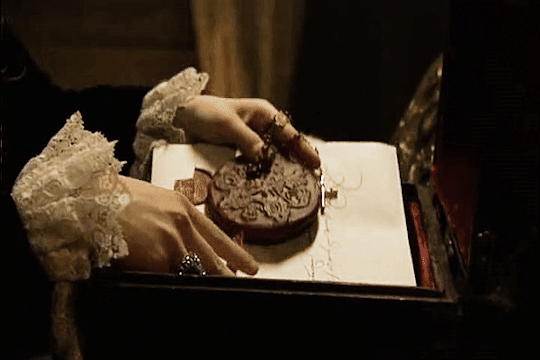


Mary Tudor : The death of her mother
The year 1536 was hardly begun when Mary lost her mother. Katherine of Aragon, who had fought so unflinchingly for herself and her daughter, died at Kimbolton Castle on 7 January. She was fifty years old. Katherine told Ambassador Chapuys wanted to bequeath to Mary her furs and the gold cross she had brought with her from Spain in 1501. Few other possessions remained to her. She had suffered with “pain in her stomach” for several months and had begged Henry to allow Mary to visit her. Yet mother and daughter, separated for four years, were not to be granted the solace of a final meeting.
Four days after Katherine’s death, Lady Shelton went to Mary and “most unceremoniously without the least preparation” told her that her mother was dead. That evening Mary requested that Katherine’s physician and apothecary be allowed to visit her so she might hear of her mother’s final hours and of the manner of her death. Charles V wrote to his wife, the Empress Isabella, that Mary was “inconsolable at the loss she has sustained, especially when she thinks of her father’s past behaviour towards herself, and the little favour she can expect for the future.” Chapuys encouraged Princess Mary to show ‘good heart and constancy … great sense and incomparable virtue and patience’ to bear the loss of ‘such a mother to whom she bore as much love as any daughter ever did to her mother, who was her chief refuge in her troubles’.
In the final inventory of Katherine’s possessions taken after her death, the scribe noted that she bequeathed four small, frayed quilts to her daughter, Mary. These quilts were used by Katherine during the lying-in period of Mary’s birth and were willed to Mary as swaddling for her own children. Katherine does not say why she kept these quilts or what they meant to her. She doesn’t need to. These quilts are deeply emotional objects that convey love and affection and ultimately, sadness, because we know, from our vantage point centuries later, that Mary never had a chance to use them because she never gave birth to a child.
Sources:
Catherine of Aragon: Infanta of Spain, Queen of England by Theresa Earenfight
Mary Tudor: The First Queen by Linda Porter
Mary Tudor: England's First Queen by Anna Whitelock
Catherine of Aragon: An Intimate Life of Henry VIII's True Wife by Amy Licence,
#catherine of aragon#katherine of aragon#catalina de aragon#mary tudor#mary i#mary i of england#eustace chapuys#sarah bolger#the tudors#english history
91 notes
·
View notes
Text
hello guys, i'm here to talk about leah toole's fictional book on mary i of england's. it's called the saddest princess.
at first, i want to clarify that i am highly aware that this book is fictional and not a biography. so you don't need to say "hey but it's fictional"
also, before reading her book, leah toole was someone i really liked. i used to follow her on tiktok and was really excited to read her book. however as you can understand, i am very, very disappointed.
let's start.

just after i had read the prologue i knew that many things would piss me off throughout the book because it was horrendous.
the vilification of queen mary is outdated now and seeing even the people that claim to like her doing this, made me feel awful. according to countless reports, in her death bed, she was peaceful and her conscience clean. the people that she had executed were mainly guilty of treason and many others were executed without her knowledge. i don't think that feeling guilty about this would be her main concern.
but do you know who was rather frightened and surrounded by guilt? her half sister elizabeth.
apart from this, if you ever saw a video of leah toole's, you probably know that she's a great hater of the spanish princess because of its inaccurate portrayals. mind you, the spanish princess tv show never ever claimed that it was historically accurate or something like that but leah toole was MAD (and rightfully so!! i totally agreed with her.) about it anyway. so imagine my disappointment when i started to read her book eagerly then realized that it, in many aspects, was a cheap copy of the tv show.
"there was no lone for this useless baby girl." i mean, really? that scene and almost everything about it was in the spanish princess. AND this whole scene could be proved wrong with countless reports. do i think katharine of aragon suffered from a kind of postpartum depression? i absolutely do. but do i think she HATED her own daughter for years? no because that's not what happened in reality.
again, this is a historical fiction book and it doesn't have to be historically accurate but it's called a hypocrisy when you criticize another material because of the same thing you did yourself.
(ps. katharine of aragon had blue eyes, not dark brown.)
mary's birth scene was AWFUL. henry saying mary is a useless girl was highly inaccurate. writing such things while mary's reputation is STILL unfairly blackened is very unnecessary.
"katherine had tried to love her daughter. but no matter how hard she tried, nothing the girl did held any meaning in katherine's eyes." are you kidding me??
also having mary curse constantly? this woman didn't know the meaning of whore until she was forty something. i can't even imagine her saying words such as bastard, harlot, whore etc. (in the book she called anne boleyn names when in reality she simply called her that woman. which is respectful enough.) especially when she used the word bastard when she was nine? now c'mon! throughout the book, the author is obviously influenced by the spanish princess tv show, even though she'd been very critical about the show. there's a pretty word for situations like this :) and it's called hypocrisy.
and *that* scene with duke philip? even the most passionate mary hater wouldn't write something like this. that was worse than wattpad, worse than ao3. (if you didn't read the book, take a deep breath, she had sex with him. again, did not happen in reality.)
apart from all of this, the only thing that i've liked about this book is clearly seeing that mary wasn't as forgiving as her mother was. because that's what actually happened. long story short, i was eager to read the other books of this series but i don't think that i'll be reading the rest. i am so very disappointed with this. it was such a waste of time. and i have to tell you that i am also incredibly sad because i used to enjoy her content a lot.
there are many more issues about this book but unfortunately i don't have enough time or will to live to write a detailed review but i think this'll do anyway.
lastly, at least there are very few quotes that i've liked and would want you to see.
—chapuys shrugged, "it would seem the king himself is struggling to separate the two religions," he said, "and his newest testaments have received mixed reactions from his council. i believe that in his heart he remains a catholic, but he does not wish to be told by anyone whether it be the pope or his best advisor - what he can and cannot do."
—"of all the women in my father's life, i have survived him the longest. and that alone is a great achievement."
—"i survived my father's tyranny for all my thirty-three years. this edward seymour could not scare me if he turned up at my doorstep dressed up as the devil himself."
#mary i of england#mary tudor#mary i#house of tudor#good queen mary#henry viii#catherine of aragon#anne boleyn#eustace chapuys#elizabeth tudor#leah toole#the saddest princess#book review#i should've understood it all the moment i saw the name of the book lmao#she was more than a sad little princess#no hate to her but i am sooo bitter
30 notes
·
View notes
Text
Eustace who stood beside his mother in court as a 14 year old boy helping her fight his uncles for the property rights of his late father watching 19 year old Mary stand beside her mother even as the whole English court discards her and she’s threatened with death. Nobody is doing it like them.
31 notes
·
View notes
Text
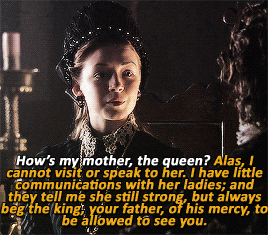
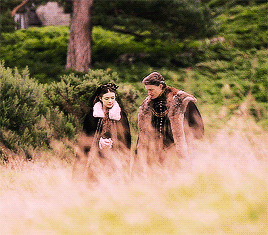
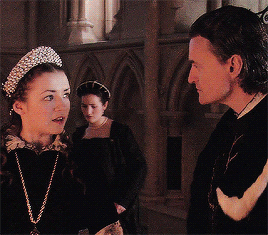


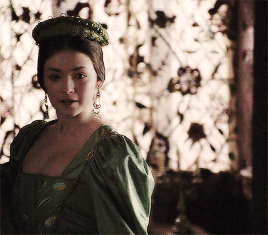
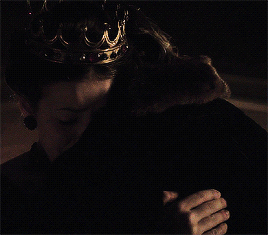
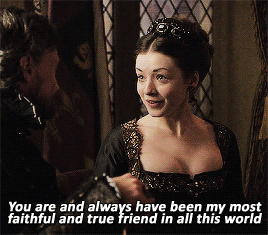
MARY TUDOR and EUSTACE CHAPUYS relationship throughout seasons.
requested by @lost-in-the-shelves
#thetudorsedit#the tudors#mary tudor#mary i#eustace chapuys#sarah bolger#anthony brophy#periodramaedit#perioddramasource#ch: mary tudor#ch: eustace chapuys#tudor history#tudor tag#tudor dynasty#tudor era#requests
350 notes
·
View notes
Text

Whodunnit gothic tragicomedy
#choices choices#tudor era#purkoy#wolf hall#hilary mantel#mary tudor#jane rochford#mary boleyn#eustace chapuys#thomas cromwell
39 notes
·
View notes
Note


XDDD I mean that is basically the definition of Chapuys. During the dinner scene in s1 he was classy but messy at the same time. We all knew he was running around to tell everyone's secrets afterwards. I mean, he even came with a few rumors about Thomas himself lmao.
#eustace chapuys#but i felt they were still friends in s1#s2 chapuys absolutely hates thomas#wolf hall
13 notes
·
View notes
Text
"Such a situation required considerable political wisdom on the part of an isolated young woman and Mary did her best to play on court sympathies when she could. At one time she [even] forced Elizabeth's servants to remove her from a litter, and another time she arrived at Greenwich before her sister. But, when rumours circulated in 1535 that Anne meant to have Mary murdered, an [...] exhausted Mary begged Chapuys to arrange her escape to the continent. Before any viable escape plan could be developed she fell ill at Greenwich. She was seriously ill at least twice more that year, and court physicians acknowledged the emotional component of her physical problems when they attributed her state to grief and despair. The effect of these events on Mary's further development as an adult is impossible to calculate. She had learned valuable lessons of resistance, but this education did not provide her with the critical skills she would later need to be an astute political leader." Oxford Dictionary of National Biography: Martindale-Meynell (2004)
12 notes
·
View notes
Text
Damn, Chapuys is a shitass liar
8 notes
·
View notes
Text
It doesn’t matter if Chapuys’ new actor is bad at his job it matters if he looks good next to Lilit Lesser’s Mary. And that’s so easy. The bar is in hell.
7 notes
·
View notes
Text


📅TUDORWEEK2024 by @dailytudors Day 2: Favourite Tudor contemporary quote about or said by the Tudor family.
⋅˚₊‧ 𐙚 ‧₊˚ ⋅ "Am I not a man like others?"⋅˚₊‧ 𐙚 ‧₊˚ ⋅
"At last, wishing to turn the conversation, the King said that he wished to ensure the succession to his kingdom by having children, which he had not at present, and upon my remarking to him that he had one daughter, the most virtuous and accomplished that could be thought of, just of suitable age to be married and get children, and that it seemed as if Nature had decided that the succession to the English throne should be through the female line, as he himself had obtained it, and therefore, that he could by marrying the Princess to some one secure the succession he was so anxious for, he replied that he knew better than that; and would marry again in order to have children himself. And upon my observing to him that he could not be sure of that he asked me three times running: "Am I not a man like others?" and he afterwards added: "I need not give proofs of the contrary, or let you into my secrets," no doubt implying thereby that his beloved Lady is already in the family way."
—Eustace Chapuys to the Emperor, written on 15 April 1533 (x)
TV Show: The Tudors (2007-2010) [ season two, episode eight] Jonathan Rhys Meyers as King Henry VIII
#tudorweek2024#the tudors#henry viii#eustace chapuys#periodramaedit#tudorerasource#jonathan rhys meyers#tudor era#tudor history#by fefa#by me
90 notes
·
View notes
Text
The conservative party saw their chance to strike and supplant Anne Boleyn with Jane Seymour, who, they hoped, would convince the King to return to the Catholic Church and Princess Mary legitimised and reinstated to the line of succession. By April 1536, Mary was informed by her friends who conspired against Anne Boleyn that “very shortly her rival would be dismissed”. Mary took a keen interest in the unfolding conspiracy and firmly believed that her father would soon divorce Anne. She instructed Eustace Chapuys to “watch the proceedings, and if possible help to accomplish the said divorce”. Mary was eager to emphasise that she did not wish for the King’s divorce from Anne Boleyn “out of revenge for the many injuries inflicted on her mother, the late Queen, and on herself” because she had forgotten and forgiven them “for the honour of God, and she now bore no ill-will to anyone whomsoever”
It is evident that neither Mary nor Anne Boleyn’s enemies were aware of what was about to happen. They often used the words “dismiss” and “divorce” interchangeably when speaking about Anne’s ruin. This clearly points out that they expected Henry VIII to divorce Anne and send her away from court in disgrace.
On 27 April, John Stokesley, Bishop of London, was approached to give his opinion “as to whether the King could or could not abandon” Anne Boleyn, but he wisely refused to give his verdict unless invited to do so by the King himself. Clearly, the conspirators tried to ascertain whether there were any legal grounds that the King could use to annul his marriage to Anne.
At some point, however, the conspiracy turned deadly. Thomas Cromwell soon began interrogating Anne’s ladies-in-waiting, hoping to build a case against the Queen. On 2 May, Anne Boleyn was arrested on multiple charges of adultery, incest with her brother George and plotting the King’s death. She was executed on 19 May.
Sylvia Barbara Soberton, The Forgotten Tudor Women: Gertrude Courtenay. Wife and Mother of the last Plantagenets
#mary tudor#mary i#mary i of england#thomas cromwell#anne boleyn#eustace chapuys#henry viii#jane seymour
20 notes
·
View notes
Text
At the same time, Chapuys viewed Mary as an impressionable young friend for whom he felt a protective responsibility. He regularly included reports to Charles about the devotion the public retained for Mary. It is a telling characteristic of his relationship with the princess that with all the domestic and international political intrigue playing out around him, Chapuys was most moved by the safety and well-being of a young woman still in her teenage years. Chapuys’s place in history is largely due to his antagonistic stance regarding Anne Boleyn, but this is perhaps due to historical interest being more vested in conflict rather than agreement. The evidence that remains from the period, however, suggests quite strongly that Chapuys was more interested and invested in protecting Mary than he was in damaging Anne.
-Writing Mary I: History, Historiography, and Fiction
23 notes
·
View notes
Text
It’s because at first the version of Mary that exists in Chapuys’ head is little more than a sexist, paternalistic remix of her real identity, so thoroughly warped by the age & class difference that he sees her as barely more than a porcelain madonna, a moral/religious figurehead, so sexless she’s barely human. But as Mary ages and their relationship is maintained through less explicitly stressful circumstances then the ones it was conceived under amidst the Great Matter, she begins to grow outside of the parameters he established for her internally. She gets her life back, she’s not just pretty and in pain anymore, she’s energetic, provocative, romantically active, loud. And that scares him, the way it scared him with Cesare’s mother, but it also excites and intrigues him, not least of all because he can’t be physically intimate with Mary the way he was with the mistress who bore his illegitimate son. The illegitimate son he left so he could go perform diplomatic duties in the same country as Mary. Who wants to be a mother. Who loves children. Who is at once everything he’d ever want in a woman and young enough to be his biological child, facts which would be so blatantly immoral if he ever confronted their coexistence that he has to force himself to stay in denial about it. While Mary goes around planning for the future and playing footsie with Phillip of Bavaria, more or less unaware that her very existence is eating this poor bastard’s brain. Eustace is a 50 year old politician with TSwift’s “You Belong With Me” playing in his head every time he meets eyes with his dead friend’s 21 year old daughter. It’s pathetic. It’s disgusting. It’s narratively delicious.
#ask to tag#Alexa play ‘Put Me In A Movie’#chary#eustace chapuys#mary i of england#Philip of Bavaria
26 notes
·
View notes
Text






María Doyle Kennedy, James Frain and Anthony Brophy in Nothing Personal
Fun fact: The movie is about a conflict between Catholics and Protestants. James' character is Protestant, Brophy is Catholic, and Maria is the ex wife of James' character.
#katherine of aragon#catherine of aragon#catalina de aragon#the tudors#Anthony Brophy#eustace chapuys#james frain#thomas cromwell#nothing personal
13 notes
·
View notes


